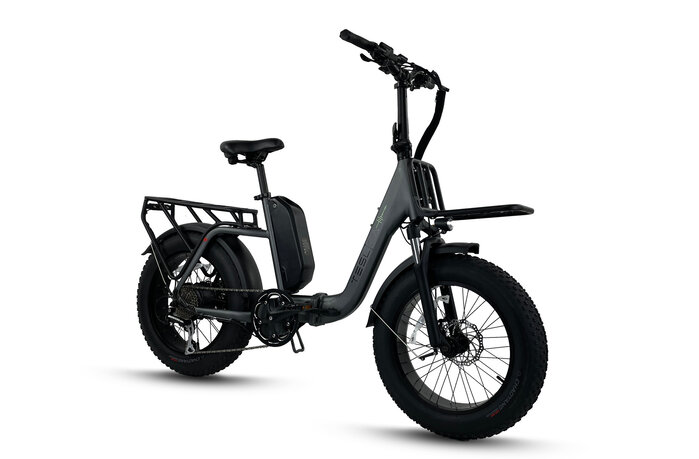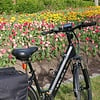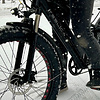Torque vs. Cadence Sensors: Understanding the Differences in E-bike Performance

Electric bicycles, or e-bikes, have become increasingly popular in recent years.
They offer a convenient, eco-friendly, and affordable way to get around town without breaking a sweat.
Today, the majority of e-bikes are equipped with a pedal-assist (PAS) system that provides riders with variable levels of assistance.
Turning on PAS, beginning to pedal, and feeling the motor engage, are all are required to ride an electric bike with assistance.
One of the key components of an eBike is its motor, which can be powered by either a torque sensor or a cadence sensor.
In this blog, we'll take a closer look at the differences between these two sensors and how they affect the riding experience.
At Teslica Ebikes, you can test ride both the cadence sensor and torque sensor.
The models that have torque sensors are:
- Teslica Care-Go Cargo CG1
- Teslica Inspire Mini N1H Foldable Fat Tire eBike
- Teslica Force Fat Tire Dual Suspension eBike X1H (also comes in cadence sensor).
The models that have cadence sensors are:
- Teslica Freedom City C1H eBike
- Teslica Freedom City Elite C2H eBike
- Teslica Purity M1H eBike
- Teslica Purity Mountain Elite M2H eBike
- Teslica Energize B1H Foldable eBike
- Teslica Adventure A1H Dual Suspension eBike
- Teslica Inspire Foldable Fat Tire ebike N1S
- Teslica Ambition F26 Fat Tire eBike
- Teslica Ambition Fat Tire Elite Step-Thru eBike F27
Ebike Torque Sensor
A torque sensor is a device that measures the force applied to the pedals and translates that into motor output.
The sensor is typically located near the bottom bracket, where the pedal cranks are attached to the bike frame. As the rider applies more force to the pedals, the sensor detects the increase in torque and signals the motor to provide more assistance.
One of the main advantages of a torque sensor is that it provides a more natural and intuitive riding experience.
The motor output is directly proportional to the rider's effort, meaning the bike feels more like a traditional bicycle. This can be especially useful for riders who want to maintain their fitness level or enjoy the feeling of pedaling.
Another advantage of a torque sensor is that it provides more precise control over the motor output. The sensor can detect subtle changes in the rider's pedaling style and adjust the assistance accordingly. This can result in a smoother and more efficient ride, especially on hills or uneven terrain.
Ebike Cadence Sensor
On the other hand, a cadence sensor measures the speed at which the rider is pedaling and uses that to determine the motor output. The sensor is typically located on the bike's crank arm or the chainring. As the rider pedals faster, the sensor signals the motor to provide more assistance.
One of the main advantages of a cadence sensor is that it is generally less expensive and easier to install than a torque sensor. This makes it a popular choice for entry-level e-bikes or riders on a budget.
However, a cadence sensor has some drawbacks as well. Because it relies solely on the rider's pedaling speed, the motor output may not always feel natural or intuitive.
For example, if the rider pedals slowly but applies a lot of force, the motor may not provide enough assistance. Conversely, if the rider is pedaling quickly but not applying much force, the motor may provide too much assistance.
Another issue with cadence sensors is that they can be less efficient than torque sensors. Because they rely on pedaling speed rather than force, they may provide more assistance than is needed, which can drain the battery more quickly.
In conclusion, the choice between a torque sensor and a cadence sensor ultimately comes down to personal preference and riding style. If you want a more natural and intuitive riding experience and are willing to pay more, a torque sensor may be the better choice. However, if you are on a budget or don't mind a slightly less precise ride, a cadence sensor may be the way to go.
Whatever sensor you choose, be sure to test-ride several models before making a final decision to ensure that you find the one that best meets your needs.
Our qualified staff are here to help. Visit us at our central location, 244 Britannia Rd, Ottawa, ON, or give us a call at 613-627-4285.




